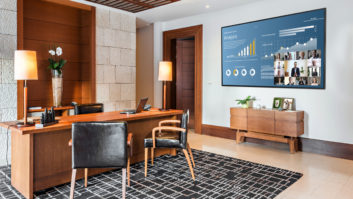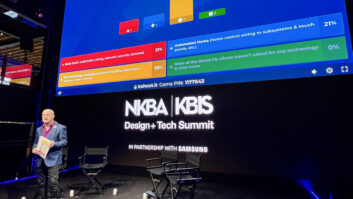Evaluating Home Subsystems and Their Mobile Applications for Clients

Gordon van Zuiden ([email protected]) is president of cyberManor in Los Gatos, California.I was recently pondering what my integration company’s mobile platform strategy should be. It needed to one that would maximize our profitability by leveraging the fact that all of our customer’s (and their children) have mobile devices in their pockets at almost all times, both inside and outside their homes. Here is how we approach this new paradigm.
Home Control as a Mobile Application
There is now a home control application for almost every product that we sell and support. Control4 has an Android and Apple application, the same for Sonos. URC is accomplished by a number of available applications, such as the one from Roomie Remote. This application only requires a Global Cache Ethernet to IR and serial interface to control all of the AV equipment that we install. Lutron has a wonderful lighting control app to control lights, window treatments, and thermostats. GE, via the Alarm.com application, has a great application for local and remote control of security systems. Denon and Pioneer have applications for their receivers. TiVO and DirectTV have applications for their set-top boxes. Panasonic has a rich application for its line of pan-tilt IP cameras. The list goes on and on. By the end of 2012 I would expect that every product that we sell in the home will be enhanced by a mobile control application, from the line conditioner in the AV rack to the front door bell, to the sprinkler system.
Many of our clients already have experimented with some of these applications; they may have purchased and self-installed Insteon lighting products or a Nest thermostat and already enjoy the benefits of controlling these systems from their mobile devices. As custom installers, we have the opportunity and professional expertise to augment their existing mobile control platforms by installing application-supported whole-house audio, AV, and security systems.
There are several key design considerations that we consider when we evaluate different home subsystems and their mobile applications for our clients, specifically:

There is now a home control application for almost every product sold and supported by the CI channel, including this one from Sonos. They can serve as a Trojan horse for potential system add-on sales down the road.• How many platforms has the application been written for? They almost all start with an iPhone application, but is there an Android application? Is there client-based software that runs on an Apple or Windows computer that has the same look and feel?
• Does the application only control the system when it is on the home network, or can it control devices from outside the home network? This is not very important for controlling a TV and a Blu-ray player but is very important when controlling a security system, hot tub, or a thermostat.
• How often is the application updated and enhanced? How seamless is this process and what is affected by these updates?
• How stable is the application?
• Where is the control code for the application located? Is it on a processor platform in the home or in the cloud? The location of this control code effects our ability to provide remote home control for our clients’ systems and for us to provide remote troubleshooting.
Mobile Home Control Applications as a Sales Tool
Whenever I visit a new potential client I always take business cards, product brochures, and a notepad for the discovery interview. But now I have a new sales tool that I bring with me and it is always in my pocket: my iPhone. My iPhone has one full screen dedicated to home control applications; from the palm of my hand I can show a prospective customer controls for lighting, whole-house music, thermostats, cameras, door locks, alarms, and even garage doors. For some of these applications I can give them a live demonstration of their functionality and screen interfaces. For others, there are application simulators that render a realistic representation of the application’s performance.
Once we have installed a few of these home control applications, it is very easy to add future mobile application-based home systems at a later date. These initial applications have become the Trojan horse for potential system add-on sales down the road.







